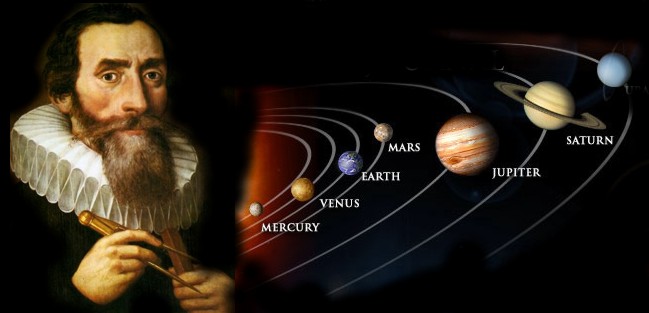We all know how easily you can find the basic facts about the Sun on the internet these days. But have you ever wondered how did scientists come up with these numbers? It has to be some kind of a hard scientific process you might think. But you'd be surprised how easy it can be.
Ancient Greeks were famous not only for their unique culture, which has influence on the world of today but also for their mathematical achievements. Almost all of the ancient Greek philosophers had an interest in mathematics, physics, logic and other important subjects. So it's natural that Greeks left some important innovations in mathematics for the future civilizations. Most of the ancient Greek ideas are still in use even today. But why am I talking about the ancient Greek Scholars? Because of the famous innovation of the Greeks - The Pythagorean Theorem (there are some evidence that earlier civilisations had a grasp of calculating the sides of the right triangle but for the sake of an argument let's just call it the Pythagorean Theorem), which can be used to deduce the distances not only to the sun but even to distant stars.
What is even more amazing is that you can calculate the distance to the Sun even without the knowledge of the Pythagorean Theorem. One of the easiest and accurate ways is using a radar to calculate the distance to Venus and then deducing the distance to the Sun. Why not use a radar to detect the distance to the Sun you might ask. Well the problem is that Sun is not very good at reflecting things. So below we have a picture, which illustrates the simple situation, which is used to calculate the distance to the sun.
The idea is simple - you use a radar to find the time it takes for a signal to travel and reflect from Venus at two different times of the year. Using a simple equation s=v x t, gives t1= 2(R-Rv)/c and t2= 2(R+Rv)/c, where c is the speed of the radar signal (which is of course the speed of light c~ 3 x 10^8 m/s).
Now you simply add the two equations and find that Rv's simplify out and then you can easily calculate R:
t1+t2= [2(R-Rv)+2(R+Rv)]/c = 4R/c, which gives R: R=1 Au= 1.5 x 10^8 km
Of course this is not the only available method. You can also use the simple ideas of ancient Greeks who were very good at calculating triangles. For instance using a triangle you can find the distance to the sun, and using the Pythagorean theorem you can calculate the radius of the sun.
As we can see from the sketch, distance a can be found using simple trigonometry. Since we can use a radar to find the distance to Venus (Rv), we find that it is: Rv = a cos(e). We can easily find the angle e by observation from Earth. Which means that a = Rv/cos(e). Dead simple.
Radius of the Sun can be calculated using simple 5th grader level maths - Pythagorean theorem.
Which gives Rs=(a^2- Rv^2)^0.5 (square rooth).
Finally you can easily calculate mass of the Sun using what is known as the Kepler's 3d Law.
Johannes Kepler (December 27, 1571 – November 15, 1630) was a German mathematician, astronomer and astrologer, and key figure in the 17th century scientific revolution. He is best known for his eponymous laws of planetary motion, codified by later astronomers, based on his works Astronomia nova, Harmonices Mundi, and Epitome of Copernican Astronomy. These works also provided one of the foundations for Isaac Newton's theory of universal gravitation.
What Kepler found during the long years of observation were the so called 3 Laws of Kepler (or the laws of planetary motion). The 3d law can be written: T^2= (4pi^2a^3 /G(Ms+m), where T is the period of a planet going around the Sun, pi is the famous pi constant, a^3 is the distance to the Sun cubed in this case, G is the gravitational constant (6.67 x 10^-11), Ms is the mass of the sun and m is the mass of the planet. Since mis very small in this case , it is negligible so you can use only Mo in the equation. Rearranging gives Ms= (4pi^2 a^3)/T^2 , where T is 1 year for the planet Earth. Calculations give that Ms = 1.989 x 10^30 kg.
Other important properties of the Sun can also be calculated using similar methods. But it's enough for today.
The most fascinating thing for me is that all of these equations are dead simple, and the fact that by using such simple calculations and principles can help you weigh the Sun. You can truly love maths when the equations are simple and you calculate interesting things. After all, once Galileo said that the language of nature is mathematics. And this language doesn't always have to be hard. Sometimes it's just purely charming.
Thanks for reading!
Ancient Greeks were famous not only for their unique culture, which has influence on the world of today but also for their mathematical achievements. Almost all of the ancient Greek philosophers had an interest in mathematics, physics, logic and other important subjects. So it's natural that Greeks left some important innovations in mathematics for the future civilizations. Most of the ancient Greek ideas are still in use even today. But why am I talking about the ancient Greek Scholars? Because of the famous innovation of the Greeks - The Pythagorean Theorem (there are some evidence that earlier civilisations had a grasp of calculating the sides of the right triangle but for the sake of an argument let's just call it the Pythagorean Theorem), which can be used to deduce the distances not only to the sun but even to distant stars.
What is even more amazing is that you can calculate the distance to the Sun even without the knowledge of the Pythagorean Theorem. One of the easiest and accurate ways is using a radar to calculate the distance to Venus and then deducing the distance to the Sun. Why not use a radar to detect the distance to the Sun you might ask. Well the problem is that Sun is not very good at reflecting things. So below we have a picture, which illustrates the simple situation, which is used to calculate the distance to the sun.
The idea is simple - you use a radar to find the time it takes for a signal to travel and reflect from Venus at two different times of the year. Using a simple equation s=v x t, gives t1= 2(R-Rv)/c and t2= 2(R+Rv)/c, where c is the speed of the radar signal (which is of course the speed of light c~ 3 x 10^8 m/s).
Now you simply add the two equations and find that Rv's simplify out and then you can easily calculate R:
t1+t2= [2(R-Rv)+2(R+Rv)]/c = 4R/c, which gives R: R=1 Au= 1.5 x 10^8 km
Of course this is not the only available method. You can also use the simple ideas of ancient Greeks who were very good at calculating triangles. For instance using a triangle you can find the distance to the sun, and using the Pythagorean theorem you can calculate the radius of the sun.
As we can see from the sketch, distance a can be found using simple trigonometry. Since we can use a radar to find the distance to Venus (Rv), we find that it is: Rv = a cos(e). We can easily find the angle e by observation from Earth. Which means that a = Rv/cos(e). Dead simple.
Radius of the Sun can be calculated using simple 5th grader level maths - Pythagorean theorem.
Which gives Rs=(a^2- Rv^2)^0.5 (square rooth).
Finally you can easily calculate mass of the Sun using what is known as the Kepler's 3d Law.
Johannes Kepler (December 27, 1571 – November 15, 1630) was a German mathematician, astronomer and astrologer, and key figure in the 17th century scientific revolution. He is best known for his eponymous laws of planetary motion, codified by later astronomers, based on his works Astronomia nova, Harmonices Mundi, and Epitome of Copernican Astronomy. These works also provided one of the foundations for Isaac Newton's theory of universal gravitation.
What Kepler found during the long years of observation were the so called 3 Laws of Kepler (or the laws of planetary motion). The 3d law can be written: T^2= (4pi^2a^3 /G(Ms+m), where T is the period of a planet going around the Sun, pi is the famous pi constant, a^3 is the distance to the Sun cubed in this case, G is the gravitational constant (6.67 x 10^-11), Ms is the mass of the sun and m is the mass of the planet. Since m
Other important properties of the Sun can also be calculated using similar methods. But it's enough for today.
The most fascinating thing for me is that all of these equations are dead simple, and the fact that by using such simple calculations and principles can help you weigh the Sun. You can truly love maths when the equations are simple and you calculate interesting things. After all, once Galileo said that the language of nature is mathematics. And this language doesn't always have to be hard. Sometimes it's just purely charming.
Thanks for reading!


 5:30 PM
5:30 PM
 silentbob14
silentbob14




 Posted in:
Posted in: 

0 comments:
Post a Comment